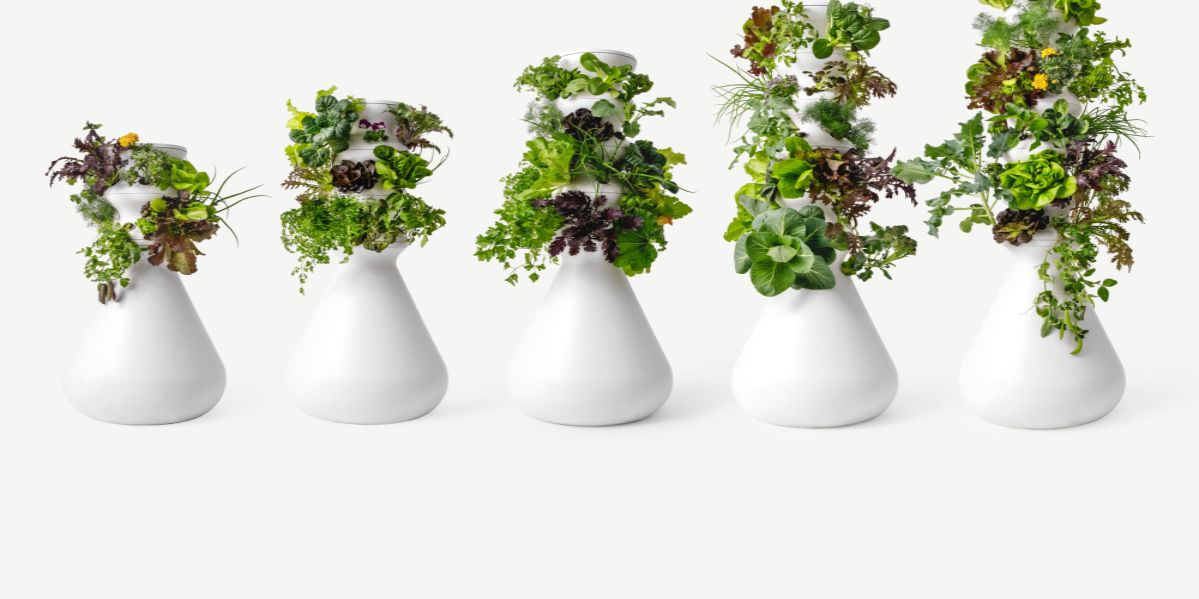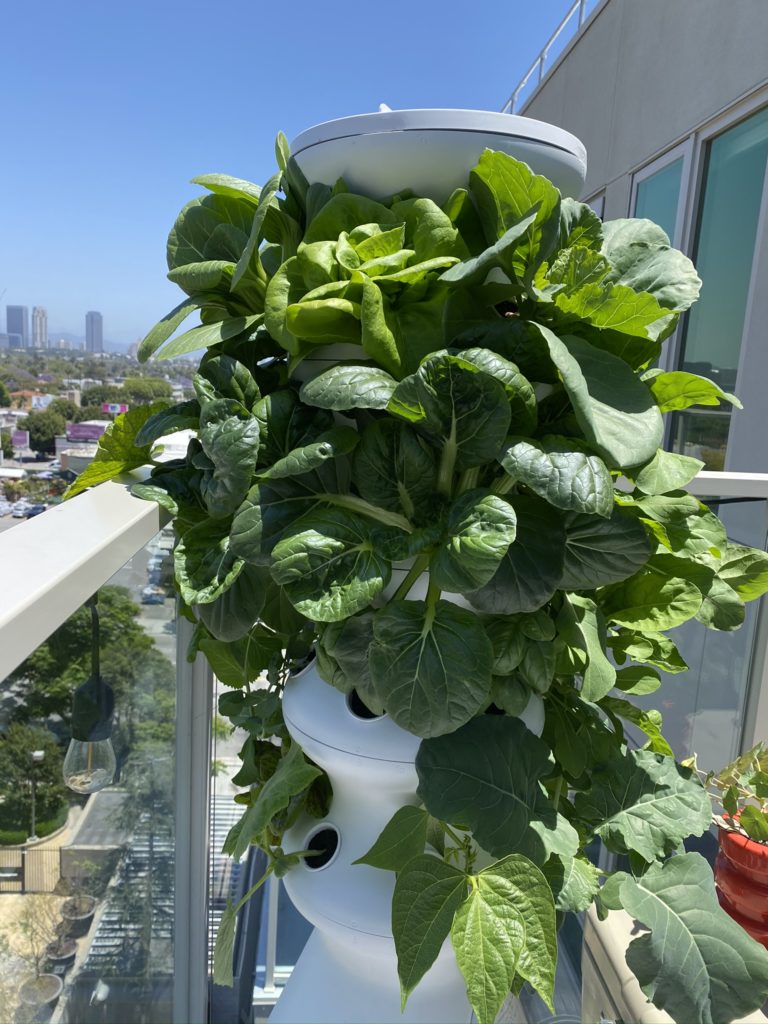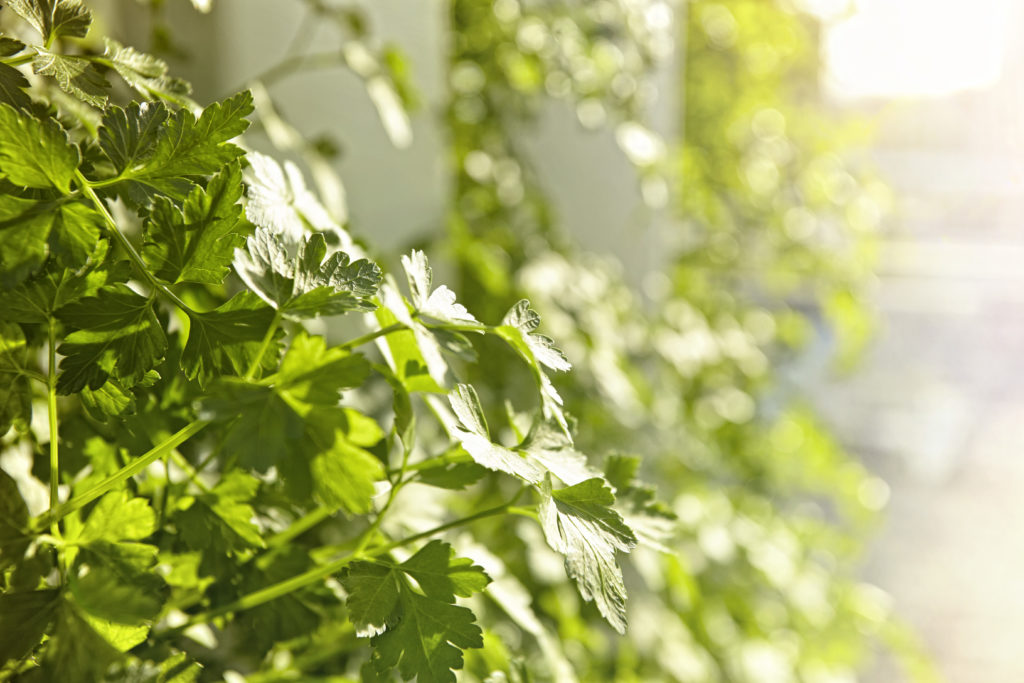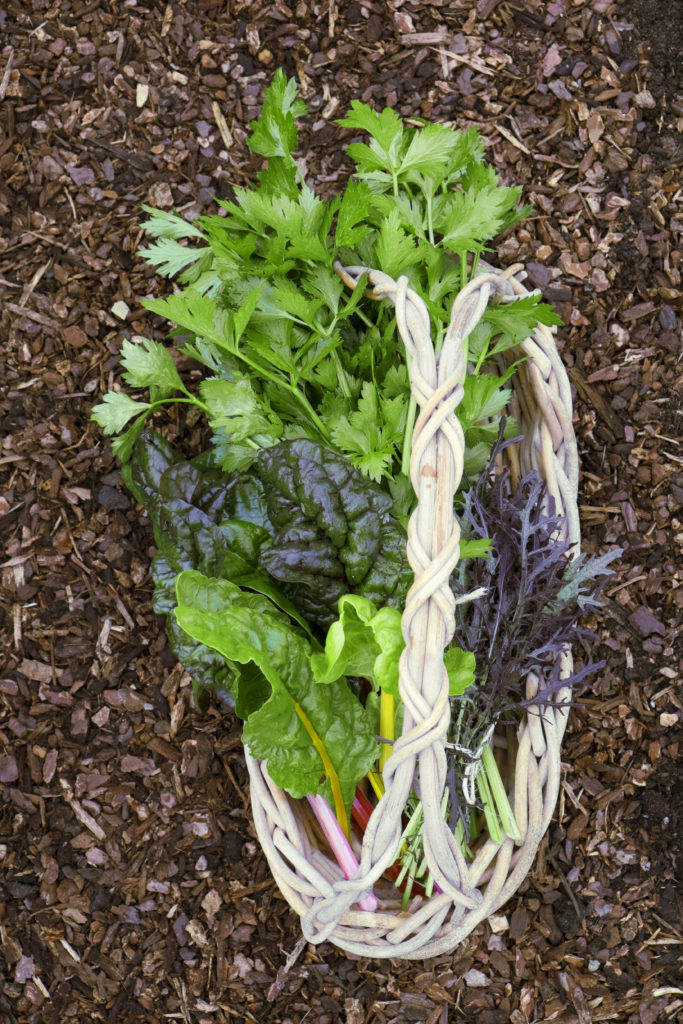
Hydroponic Garden Hacks: How to Grow Your Vegetables Like Zooey Deschanel
Vertical Gardens are pretty easy to use, but Mother Nature always has a few aphids up her sleeve. Here’s the ultimate list on how to take your vertical garden to new heights.

Last summer I couldn’t wait to get my hands on one of those trendy hydroponic gardens that swept Instagram, and I soon learned they have a lot of upsides. My Lettuce Grow takes up about 4 square feet of space, uses more than 90 percent less water than my traditional garden, and since it circulates nutrient-containing water via a timer, the watering schedule is pretty straightforward. Even better, my veggie tower acts as a sculptural conversation piece that happens to sound like a soothing water feature, and I get bragging rights for growing romaine lettuce just like founder Zooey Deschanel does in those adorable Instagram pics. Meanwhile, my bok choy is crisp, my cucumbers aren’t bitter and my butter lettuce is the best I’ve ever tasted.
But even though hydros are marketed as plug-and-play, issues can arise, including broken stems, the dreaded fungus gnats and weird-looking roots. (Is that rot?! Is it not?!) I’ve had moments where I wished I could just get an expert on the phone and ask a million questions. Then I realized I’m the garden editor of Sunset and I can do exactly that.
Cue Niels Thorlaksson, the director of horticulture at Lettuce Grow, who gave me every tip I could hope for when it comes to hydroponic hacks. By the way, Thorlaksson works for Lettuce Grow, but these tips are good for any system, whether you have a Gardyn, a Mr. Stacky, or something you made yourself.

If You Have a Problem, But Don’t Know Where to Start
If your hydroponic garden is growing pants that are leggy or have pests, the first thing to do is check if your hydro is getting enough sun, Thorlaksson says. “A lot of customers have sunnier spots, but neglect to put their system there because they don’t want to run an extension cord or to see it in the place where it would do best.” My takeaway: If you’ve invested in a vertical garden, you should get your money’s worth and put it where your vegetables will thrive. Personally, I think verdant towers look good anywhere, from a garden to a patio to a pool.
If One Side Doesn’t Produce as Much as the Other
With a vertical garden tower, it’s inevitable that one side won’t get as much sun. I’ve tried choosing a plant that can tolerate shade—like arugula, for example—but the truth is, it still doesn’t thrive. Thorlaksson recommends giving your hydro a quarter turn once a week. When I mentioned that this will be difficult—I’m kinda on the scrawnier side and a full hydro tank is too heavy for me—he suggested purchasing a dolly.
If You Don’t Know What to Grow in Your Hydroponic Garden
In general, whether you’re using a hydro system or raised beds, you need to be aware of the climate and which vegetables will produce there. “If you’re in the Rockies, tomato, basil and zucchini will struggle [in a hydroponic tower],” says Thorlaksson. “But lettuce, broccoli, cauliflower and herbs will thrive.”

James O’Neil / Getty Images
If You Live in the Desert
Maybe your average temperatures are hitting between 110 and 120. In that case, “Things just aren’t going to be able to grow in that environment,” Thorlaksson says. So, what to do? He recommends getting a grow light and bringing your system inside.
If You’re Facing a Heatwave
The Lettuce Grow Facebook Group has all kinds of hacks for extreme heat; some people use a patio umbrella they can pop up and down. (This does block out a lot of light, however, so you want to make sure you don’t have it up too long.) Others use a shade sail for partial shade. You also can set the timer to water more frequently, and a dolly can prevent heat transfer from the ground. “Some people even freeze water bottles and put them in the tank,” Thorlaksson says. “Although that probably isn’t effective.”
If Your Hydroponic Garden is in a Cold Climate
For vertical gardens in places like Washington, Montana or Colorado, you need accessories. A heater in the tank is the first investment you may want to consider. Foil insulation can keep the water warmer. Thorlaksson has been particularly impressed by people who buy small greenhouses on Amazon and place their vertical garden inside. “It’s gonna stay warm in there, and you can set up a thermostat and a fan to keep it even more stable,” he says.
If You’re Buggin’ out
I’m paraphrasing, but someone once said that the best tool for any gardener is their eyes. Take a look at your vertical garden at least every other day so you can catch pests like caterpillars, aphids and spider mites before they get established. If they do, Thorlaksson recommends picking off caterpillars by hand. You can also take your seedling or plant out of the stand and rinse off the leaves in the sink to remove aphids and spider mites. Or just pull out the hose and spray your plants down.
If You Don’t Know When to Call It Quits
Every time I give a new seedling a forever home, I get emotionally attached. And no wonder: If I didn’t love plants, what would be the point of gardening? But Thorlaksson points out that gardeners tend to hang on to plants that are sickly because we believe we can save them. Instead, he says to take off the hero cape, remove the offending plant from your hydroponic garden and put the plant in the compost bin; it’s probably not going to rejuvenate and will be a low producer no matter what you do.
If There’s a Hole in Your Hydroponic Garden Tower
If you toss a plant—or harvest one—you’ll have an empty space in the tower. (Unless you have a new seedling ready to go, of course.) This means pests can get inside the system and lay eggs. But I’ve never found a plug for sale. I pressed Thorlaksson on the matter, and he admitted that Lettuce Grow doesn’t make one. So, I’m putting the company on notice: Please do this thing. Until then, Thorlaksson’s family has come up with some clever hacks. His father-in-law plugs his tower holes with golf balls or shot glasses. His mother wraps the growing cup in tinfoil. He also says you can leave the cup and growing medium in your tower until you’re ready with a new seedling, but this friendly garden editor doesn’t recommend it—after a week, mine was playing host to the dreaded fungus gnats.
If You Have the Dreaded Fungus Gnats
“These are inconvenient and unattractive but they’re not harming your plants or roots,” says Thorlaksson, who added that the gnats are feeding on the harmless algae that often lives on top of the growing medium. Honestly, I don’t care if they’re not harming the plants—fungus gnats are no fun. It turns out the method I’ve been toying with is the one Thorlaksson recommends: a handful of Mosquito Bits. These corn kernels are covered with a bacteria that kills fungus gnat larvae. (Mosquito larvae, too.) One or two teaspoons in the tank every week should take care of the problem. Hot tip: A few kernels also rids my houseplants of fungus gnats.
If The Roots Look Weird
I’ve noticed that the plant roots in my hydroponic garden can be brown, reddish or pearly white. What’s the deal? “Different varieties exhibit different types of root growth and color, just like the top of the plant grows different,” Thorlaksson says. “Parsley grows orange roots, arugula is grey, sorrel is silvery.” So, embrace the colors of the rainbow.

Thomas J. Story
If Your Plant Stems Break at the Base
I’ve lost a tomato plant, two peppers and a thriving cucumber vine this way. Apparently, I could be overwatering, but heavy plants have delicate stems that will need staking. Pepper plants should be at the top of your vertical garden, and a chopstick stuck into the growing medium can act as a stake. Another way to tie up plants is by using string to tie to the top of the tower or to tether your vines to stakes, a tomato cage or trellis.
If You Want to Increase Yield
The number one thing to have to increase yield on your hydroponic garden, according to Thorlaksson is enough sun. (Or, if you’re inside, grow lights.) He also says it’s important to grow plants when they are in season. You can cut lower leaves and leave the plant intact when it comes to things like butter lettuce and romaine to get repeat harvests.
If You Don’t Remember Why You Got Into This
Vegetables you’ve grown yourself not only taste good, but the accomplishment adds a celebratory air. Says Thorlaksson “It’s wonderful if people are using a hydroponic system whether it’s ours, something they made at home [or bought somewhere else]. We want to connect people to their food because plants are amazing.” I couldn’t agree more.
